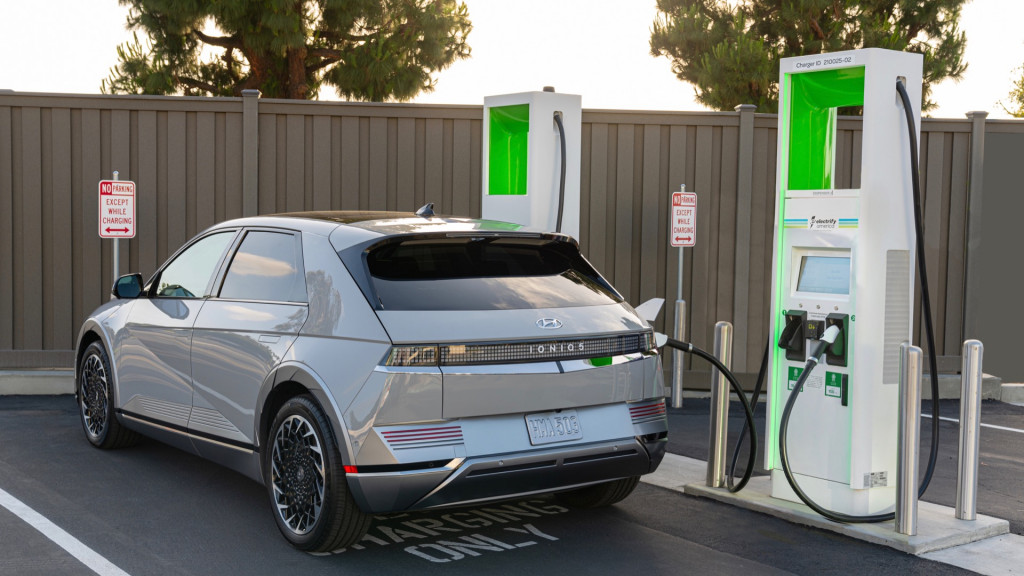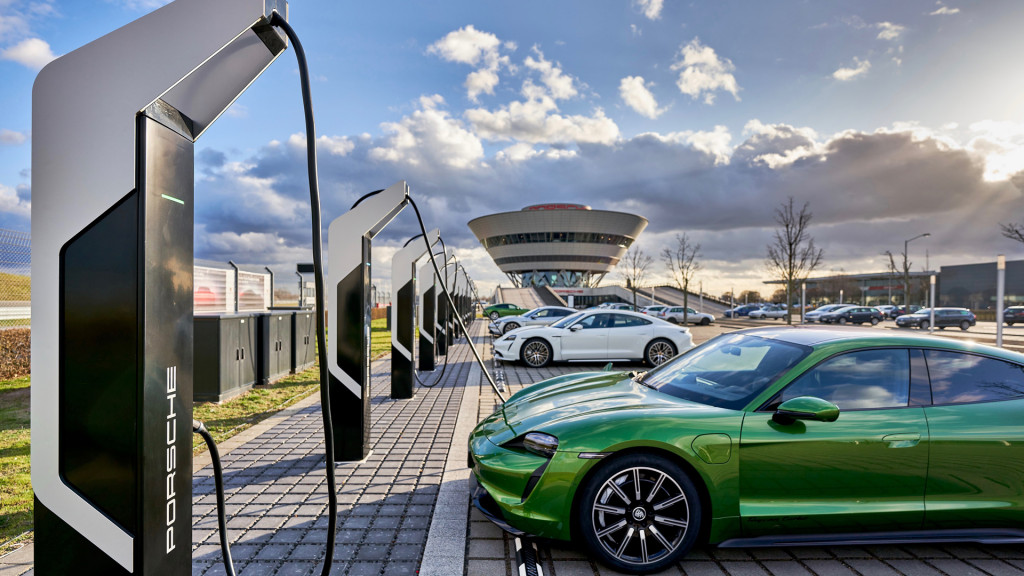The United States Departments of Transportation and Energy on Thursday announced funding for EV charging infrastructure over five years under the Biden administration's infrastructure law.
"A century ago, America ushered in the modern automotive era; now America must lead the electric vehicle revolution," Transportation Secretary Pete Buttigieg said in a statement.
Part of the National Electric Vehicle Infrastructure (NEVI) Formula Program created by that law, the funding will be dispersed to individual states (and the District of Columbia) to help add charging stations, particularly along Interstate highways, according to a DOT press release. That starts with $615 million for the 2022 fiscal year.

2022 Hyundai IONIQ 5 at Electrify America DC fast-charging station
The amount of funding varies by state. For example, Delaware will receive $2.6 million for fiscal year 2022, while Texas will receive about $60 million. For the total five-year period, funding ranges between just under $17 million for the District of Columbia, to $407 million for Texas.
States will now have to submit plans for how funding will be used, although the federal government will provide some guidance. The DOT noted that it expects charging station placement to follow pre-designated Alternative Fuel Corridors along major highways.
"Americans need to know that they can purchase an electric vehicle and find convenient charging stations when they are using Interstates and other major highways," Deputy Federal Highway Administrator Stephanie Pollack said in a statement. "The new EV formula program will provide states with the resources they need to provide their residents with reliable access to an EV charging station as they travel."

Porsche electric-vehicle charging station
In addition to prioritizing highway charging, the federal guidance also says that states should fund DC fast-charging stations, and that stations should have at least four ports capable of simultaneously charging four EVs. Stations should be located every 50 miles along Interstate highways and be located within 1 mile of highways, according to the guidance.
Federal funds will cover 80% of EV charging costs, with private or state funds making up the balance, the guidance said. Additional guidance covering charging hardware is also scheduled to be released by May.
The DOT also recently released a toolkit for planning rural charging—something that the convenience industry and fuel retailers would like a piece of.

7-Eleven DC fast-charging station
The start of a national network was included in the infrastructure bill that passed in November. The Biden administration's goal is 500,000 chargers by 2030, but this initial allotment of funds will only pay for a small first piece of that.
Market research results have shown that EV drivers are most satisfied with the Tesla Supercharger network, but a recent study ranked Electrify America on top for the user experience, not including charging performance or downtime.











